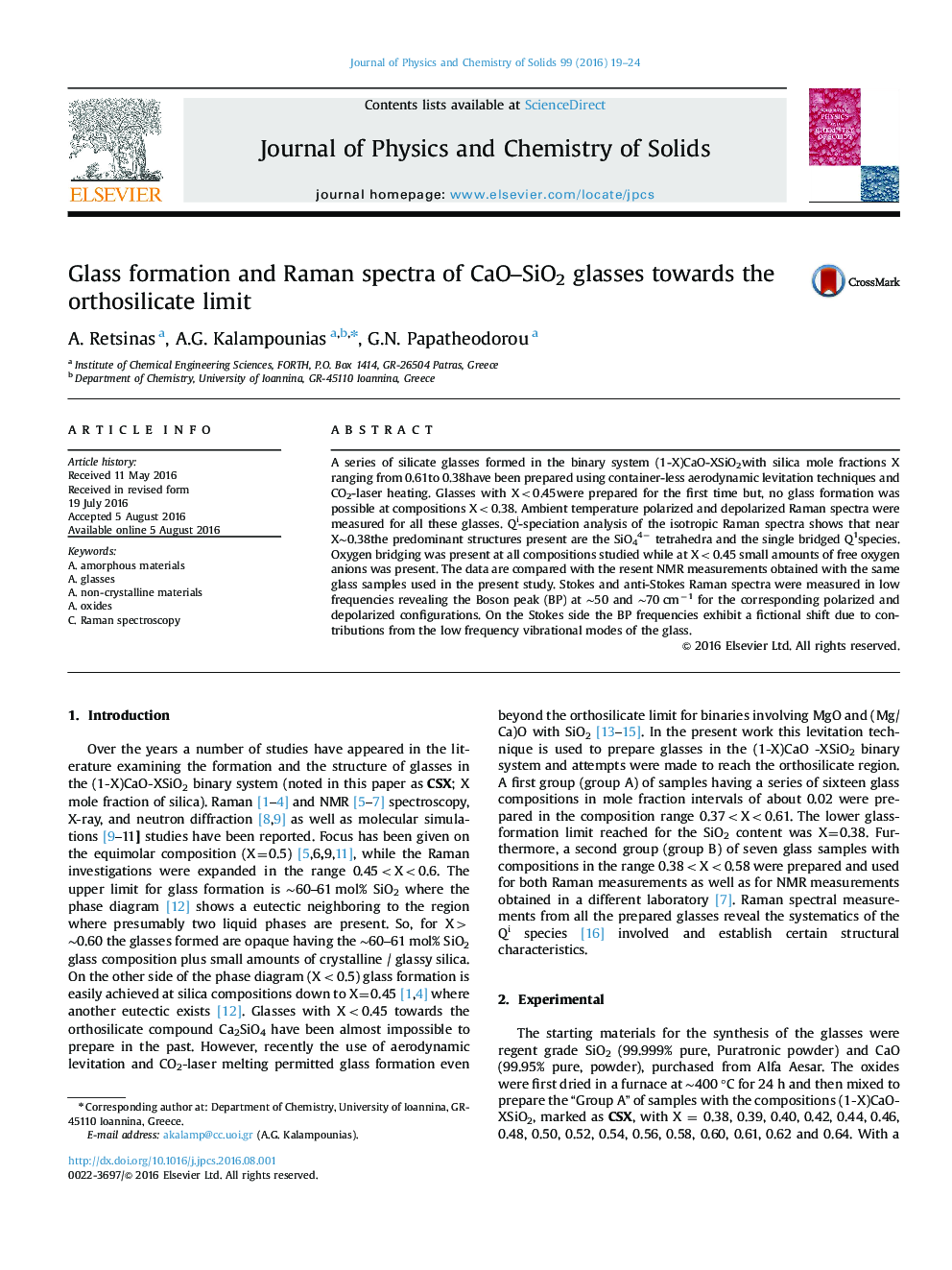| Article ID | Journal | Published Year | Pages | File Type |
|---|---|---|---|---|
| 1515198 | Journal of Physics and Chemistry of Solids | 2016 | 6 Pages |
Abstract
A series of silicate glasses formed in the binary system (1-X)CaO-XSiO2with silica mole fractions X ranging from 0.61to 0.38have been prepared using container-less aerodynamic levitation techniques and CO2-laser heating. Glasses with X<0.45were prepared for the first time but, no glass formation was possible at compositions X<0.38. Ambient temperature polarized and depolarized Raman spectra were measured for all these glasses. Qi-speciation analysis of the isotropic Raman spectra shows that near Xâ¼0.38the predominant structures present are the SiO44â tetrahedra and the single bridged Q1species. Oxygen bridging was present at all compositions studied while at X<0.45 small amounts of free oxygen anions was present. The data are compared with the resent NMR measurements obtained with the same glass samples used in the present study. Stokes and anti-Stokes Raman spectra were measured in low frequencies revealing the Boson peak (BP) at â¼50 and â¼70Â cmâ1 for the corresponding polarized and depolarized configurations. On the Stokes side the BP frequencies exhibit a fictional shift due to contributions from the low frequency vibrational modes of the glass.
Related Topics
Physical Sciences and Engineering
Materials Science
Electronic, Optical and Magnetic Materials
Authors
A. Retsinas, A.G. Kalampounias, G.N. Papatheodorou,
